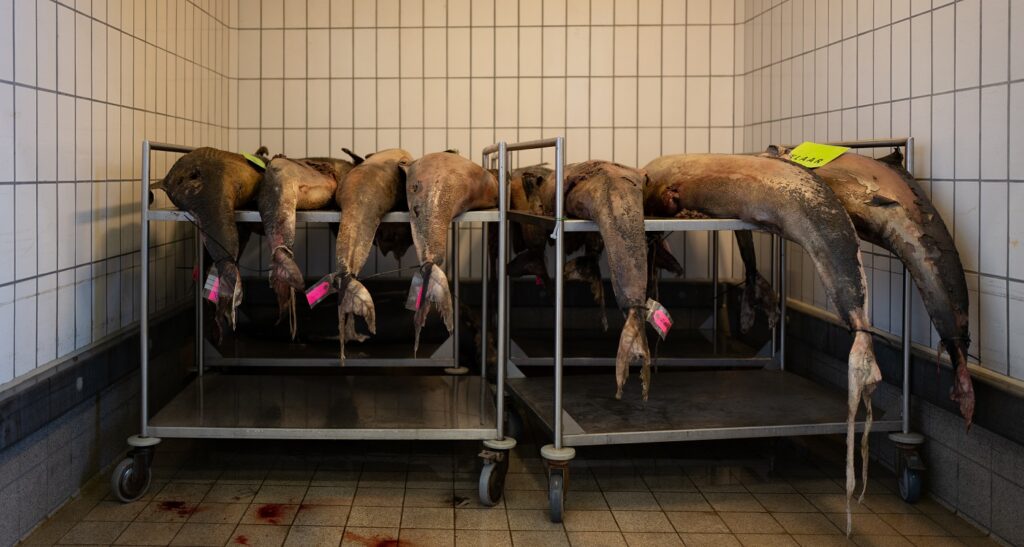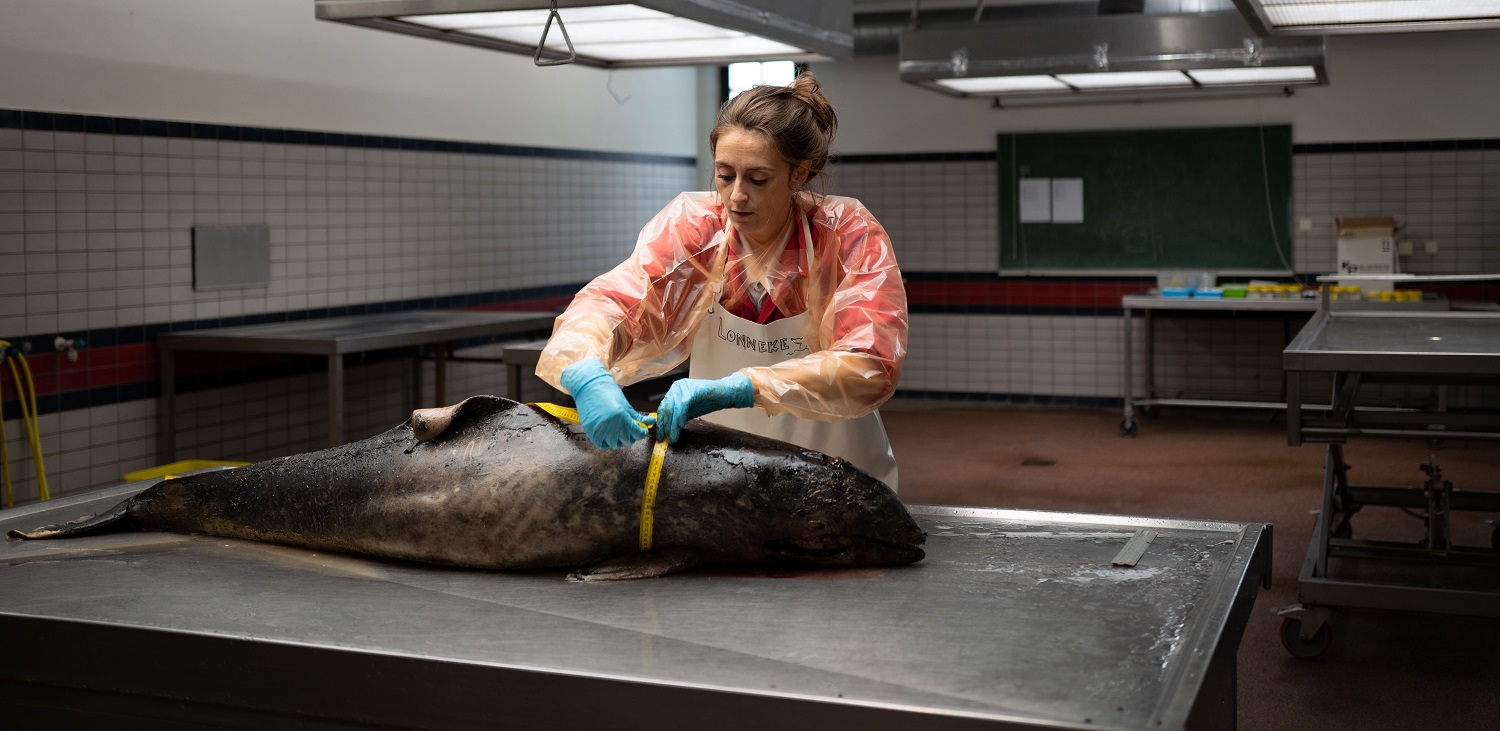Marine biologist, Mardik Leopold of Wageningen Marine Research, reaches this conclusion. The bacteria Erysipelothrix rhusiopathiae was found in three-quarters of the 22 examined porpoises.
This bacterium is responsible for erysipeloid (blood poisoning), an infection that is mostly known to occur in pigs and turkeys but may also affect reptiles, fish and humans.
In the infected porpoises, which had been dead for some time, the bacteria were found lodged in various organs. It is the first time the bacteria is found in beached porpoises. Nor are any incidents of large-scale mortality caused by this bacteria found in literature. ‘But, I do believe we have found the cause’, Leopold states.

Over a ten-day period last summer, some 160 dead porpoises were stranded on the Wadden islands. That is a lot, as some 600 dead porpoises strand on the Dutch coasts in a whole year on average. Thus, the Ministry of LNV (Agriculture, Nature and Food Quality) commissioned WUR to search for the cause behind this unusual occurrence. WUR investigated, among other things, the animals’ nutrition.
Pregnant
The porpoises had a ‘reasonable or good health prior to death’, the scientists conclude. ‘They had a healthy layer of fat, had relatively few parasites, and many of the adult females were pregnant’, biologist and porpoise expert Lonneke IJsseldijk (UU) says.
When you find that bacteria, it has all the makings of a smoking gun
Mardik Leopold, marine biologist at Wageningen Marine Research
‘However, despite their good health, no remainders of prey were found in eleven porpoises’, Leopold adds. ‘And the remainder of the animals had only very little food in their stomachs. This means the animals went hungry for some time before they died. This matches a short but acute disease. When you then find this bacterium,
it has all the makings of a smoking gun.’
Usual suspects
‘Moreover, Leopold continues, we were able to rule out many other possible causes of death’. ‘Including the usual suspects such as wind turbines, oil spills, collisions with vessels, exploded WWII bombs, bycatch, etc. The bacteria have been found in fish previously. Consuming infected fish may have caused the infection.’
The investigation continues. Scientists from Erasmus University are looking for viruses. A low dosage of the toxin saxitoxin was also found in the porpoises. And Leopold wants to examine a batch of sprat that originates from the same region as the porpoises. ‘I wonder if we are able to cultivate the bacteria from these fish. It is still an exciting search.’

 An autopsy is being performed on a dead porpoise. Photo Bas Niemans, Utrecht University
An autopsy is being performed on a dead porpoise. Photo Bas Niemans, Utrecht University 

